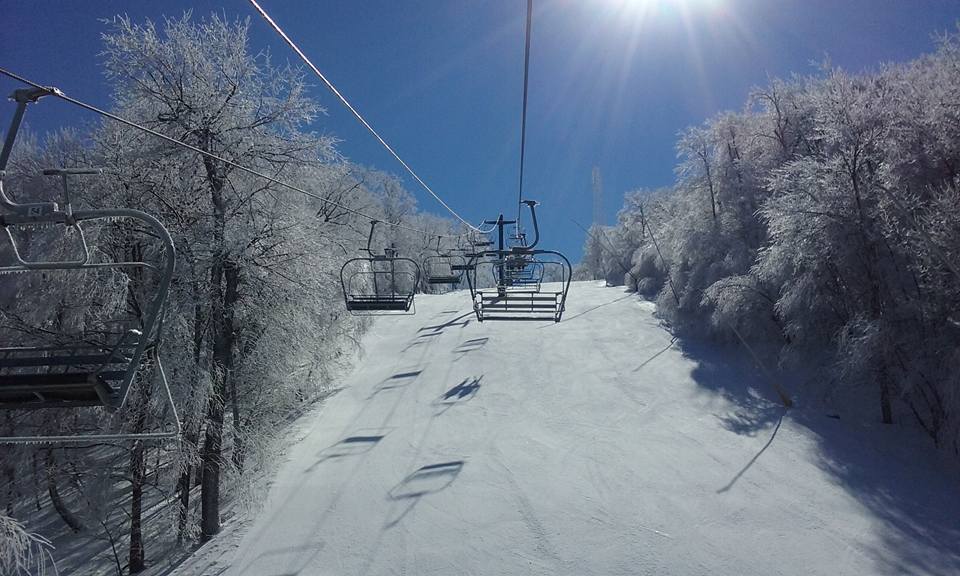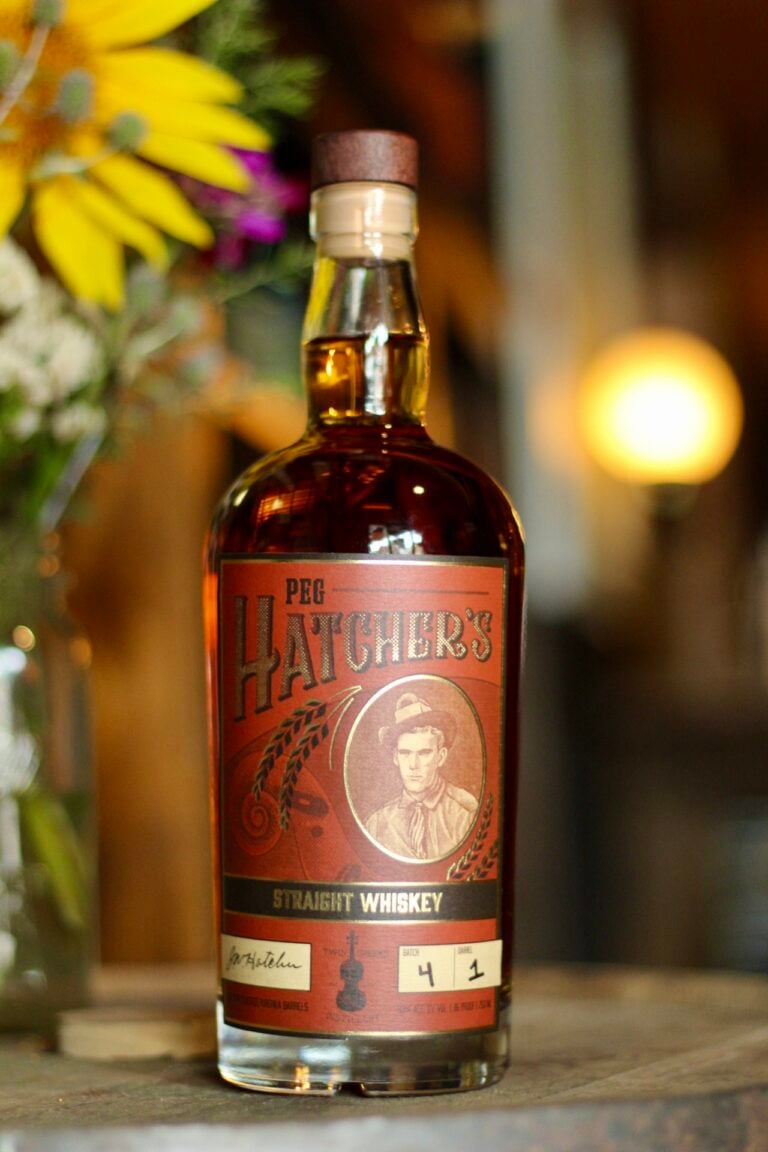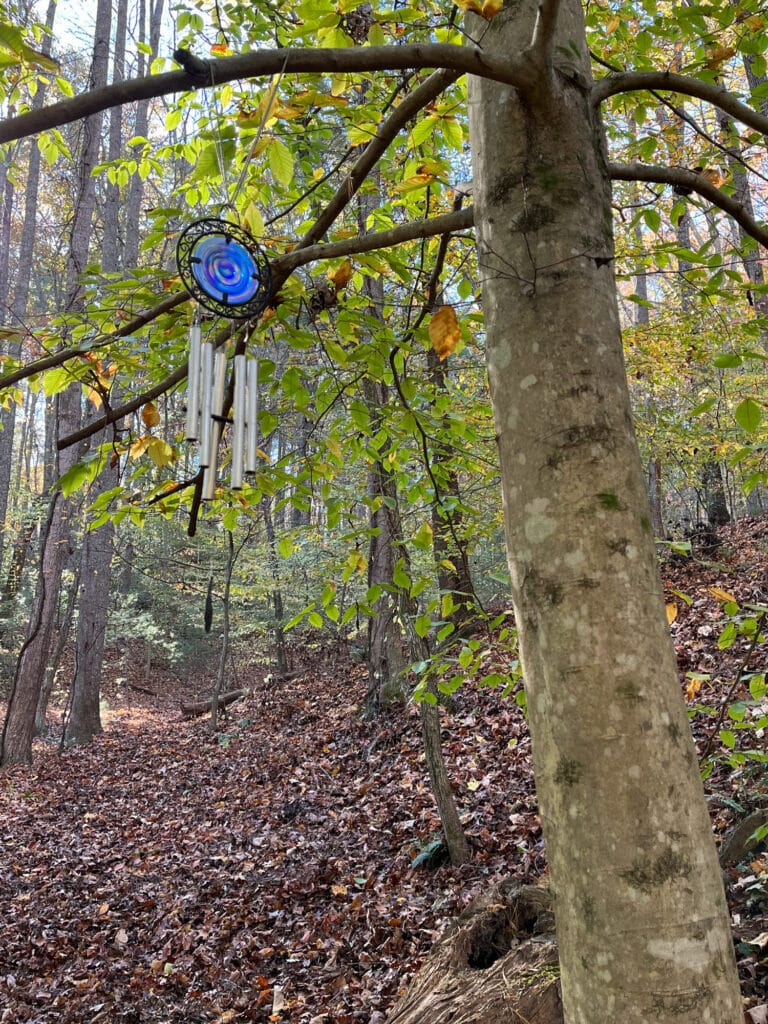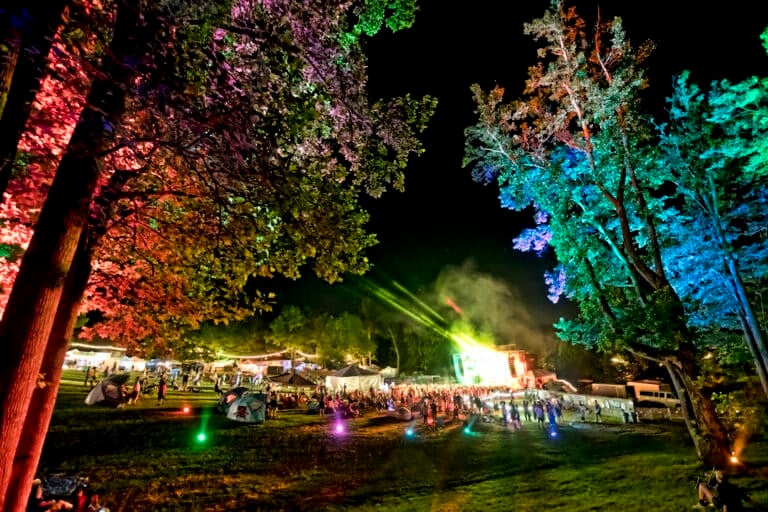How long will Southern snow last with temperature records soaring and glaciers melting all over the globe?
Appalachian State University’s Montana Alan Eck has been studying SOuthern Appalachian climate patterns, and he predicts that “there may be a shortening of the ski season—possibly lasting only until late February or early March.” It’ll also be “more difficult to depend on natural snow,” he warns, “so manmade snow is key.”
But that’s always been the assumption made by Southern ski areas, which is why snowmaking has been job number one for decades. Like a lot of ski area operators, Wintergreen’s Director of Mountain Operations Zach Marlowe confesses, “I can’t tell you whether the climate is changing or not, we’re just constantly trying to take advantage of whatever cold weather window we have.”
Achieving that goal back in the day relied on portable, sled mounted “snowguns” that really looked like guns. They had to be dragged into position onto ski slopes, often in the coldest hours of the night, by ice-encrusted, Pillsbury Doughboy-dressed, snowmaking crews.
Making snow—and not spraying the slope with water, or making ice—required manually mixing compressed air and water pumped to the snowgun through cold-stiffened hoses wrestled across the slope. Sometimes the hoses froze and burst. At its best, this kind of primitive snowmaking was more art than science. The technology was inefficient, time-consuming, and often just made bad snow. “Back then, the minute the person walked away from adjusting water and air mixtures on the slope,” Marlowe says, “you can bet the guns were probably adjusted wrong.”
One glance around a modern ski area reveals how much has changed. Earlier style guns are always lurking nearby, but today’s arsenal of snowguns include massive snow-spewing “airless” behemoths that dispense with, or greatly reduce, compressed air and use built-in fans to atomize the water. Some of these guns can be wheeled around to new locations but the trend is to mount them on towers that are now seen lining slope after slope on Southern ski areas.
High-tech can be invisible too. Some resorts mix their water supplies with a product called Snowmax, a natural protein that makes more snow at higher temperatures and stretches a resort’s limited water supply. “It’s about “being more efficient with our water—trying to be as green as we can,” Marlowe admits.
One of the biggest steps the industry is taking in the direction of environmental awareness is embracing the computer technology that drives today’s entire snowmaking operation. Says Marlowe, “Wintergreen’s snowmaking system is 100 percent automated. The computers take in weather reports from 45 to 55 spots on the mountain, and every nanosecond, the guns are adjusted automatically to make perfect snow for that location.” That software is constantly improving. Upgrades like those are often made in summer when snow is nowhere to be seen.
Firepower … and Philosophy
The result is that Southern slopes boast massive firepower that opens more slopes sooner then ever before. That’s a philosophical as well as technological shift, and no one better personifies that than Gunther Jochl, owner of Sugar Mountain in Banner Elk.
Jochl was born in a German town to an Austrian family from Kitzbühel. He grew up skiing and teaching skiing in the Bavarian and Tirolean Alps and easily got a ski job in the States in the 1970s when European influence was strong, even in the South. Horst and Manfred Locher of Bryce Resort in Virginia hired him as an instructor and the brothers still run the resort.
He looks back at the mid-70s resort bankruptcies in the ski industry as a valuable learning experience. “The ski areas didn’t go broke back then because of the bad times—they went broke because of the good times, because of all the money they wasted,” he maintains. That quote captures a philosophy of fiscal conservatism that now animates Southern skiing. Jochl, and managers at likely all of the region’s resorts, have learned that top notch technology and sound management can indeed overcome climate—if you keep your eye on the bottom line.
Making it Happen
Jochl set about seeing that Sugar would be one of Southern skiing’s survivors—and he’s helped draft the rest of the region with him. One thing he started doing was opening Sugar earlier than ever. “It used to be unheard of to start skiing in the South before the 15th of December,” he says. “When I came here, I said, ‘it’s gonna get cold. What else do we have to do? Let’s make snow.’”
Sugar started opening in November, and, “everybody thought we were nuts,” Jochl says. “By the time they were wondering what we did, we had fantastic skiing on Big Birch and made some money—and gotten great publicity.”
To open ever earlier and easier, Jochl steadily increased snowmaking over the years—with one goal in mind. “My biggest goal was to make snow to the top in one setup.” Besides good marketing, operationally it’s much easier. “It’s such a process, making snow here and there. It’s so much better to just hit it all. That’s one thing Appalachian Ski Mountain does,” Jochl says. “They hit the button, every snow gun comes on, and they cover the whole mountain.”
Steve Drumheller at Canaan operates similarly. Canaan had slipped a little in the snowmaking department until the resort doubled its snowmaking last year and expands it further for winter 2017-’18.
The goal now is to open as much terrain as early and as fast as possible, and that means “hitting two trails from the top down and covering some of the beginner terrain,” he says. “That’s almost like a billboard, advertising great skiing. Now when we make snow at night from the top in early season—we turn on the lights and the buzz gets out there.”
Last year, Canaan opened its famous run Gravity for Xmas, and that had never happened before. “It’s a new philosophy about where and how to make snow,” Drumheller says—and it’s an example more Southern slopes are following.
Grooming, Too
Giving skiers what they want is itself a way to outsmart a warming climate. So is great slope grooming, another high-tech element of skiing resorts focus on more than ever. When Jochl arrived in the mid-70s, “nobody groomed,” he says, “it was awful. I like to ski and I like to ski nice conditions—and our customers don’t want anything different than I want.”
In the last few years, Sugar’s bottom line has also benefitted from a new slope, the New England-like cruising run Gunther’s Way and a brand new high-speed, six-person, detachable chairlift, as sophisticated as lifts anywhere in the world.
“People just expect more and more of us,” he says. “Did we have to build that new slope and lift? No. But having that improvement, having something for people to talk about, is tremendous, and not just for us. That gets a conversation going about things happening in the Southeast.”
The speed and depth of snowmaking coverage is relative to slope acreage and it is easier to open a smaller ski area than a big one, especially when local ski areas range from a few acres at Sapphire Valley in North Carolina, to about 100 plus acres at many larger slopes. Sugar boasts 125 acres, and Snowshoe about 251 acres on three separate slope systems.
With the most acreage to cover, Snowshoe has been fighting the good fight since its debut in 1974. Snowshoe PR specialist Shawn Cassell suggests skiers may hear good snowmaking news in the future after 2017’s major ski area consolidation that saw Snowshoe purchased by Aspen’s four resorts, then merge with a few major companies into a group of resorts that include Squaw Valley, Alpine Meadows, Mammoth Mountain, Deer Valley and more.
“Aspen is about as green and climate change-oriented a company as anyone out there,” Cassell says. “There’s as much hope now as there ever has been that Snowshoe will grow, especially in the slope department.” But, he warns, “that won’t start without major snowmaking improvements. We’re usually not fully open till January as it is.”
According to Snowshoe vice president of operations, Ed Galford, who has been at the resort “since day 1,” the resort’s snowmaking windows have changed. “Now most snowmaking windows are 2-3 days instead 4-5,” he says. “But with better technology, we want to be able to make as much snow in the shorter windows as we once did in the longer timeframes. That’s the challenge.”
To help meet it, Cassell says last year, Cupp Run was lined with seventy-five new SnoLogic guns. The guns’ miserly need for compressed air permits them to make more snow with far less energy use.
Profit Centers Are Us
Regardless of whether resorts think they’re waging war against a warming climate, a ski area’s quiver is increasingly full of arrows aimed at profitability. Four season resorts like Wintergreen, Snowshoe, Massanutten, and Canaan Valley West Virginia have it easiest. If the ski season isn’t great, Canaan can fall back on its summer amenities, including golf, tennis, pools and more.
Steve Drumheller, says, “Regardless of the winter weather, summers often save us.”
Even focused winter resorts have options. Both Beech and Sugar Mountains have summer mountain biking programs. There’s even a “wedding industry” adding to the appeal of ski areas. Taking a chairlift to your mountaintop nuptials definitely provides a peak experience.
Granted, strictly focused ski areas have a bigger challenge than four season resorts, but even a dedicated winter resort like Beech Mountain, with the East’s highest ski slopes, has a batch of options.
Celebrating its 50th anniversary this year, Beech Mountain and the resort’s Beech Tree Village have always had a classic ice skating rink, but other ski areas, like Sugar Mountain and Appalachian Ski Mountain, have followed suit. Snow tubing has also become a strong source of revenue at many ski areas, including Beech Mountain, Sugar Mountain, and Wolf Ridge—as well as at four season resorts.
The region’s spectrum of tubing facilities near ski areas help ski businesses even if they’re not located at the slopes. They range from family-friendly and tiny, to huge, like Seven Devils Snow Tubing near Boone, that also carries shrieking zipliners above the tubing lanes. These sliding sites spread out the impact of winter tourism beyond the resorts.
All of these winter and summer amenities attract more customers to ski areas and add to visitor options—especially if the weather or ski conditions aren’t great. That keeps people happy and diversifies the ways a resort builds its bottom line.
All I can say to that is, “Cool!”
Randy Johnson’s 1987 book Southern Snow: The Winter Guide to Dixie is the “cult classic” authority on winter sports in the South. He’s updating the book for rerelease by the University of North Carolina Press.








